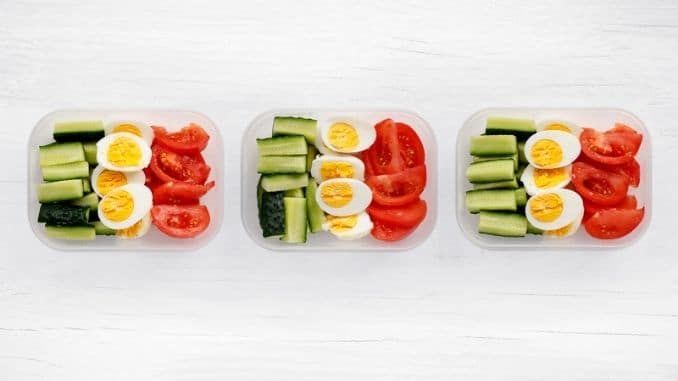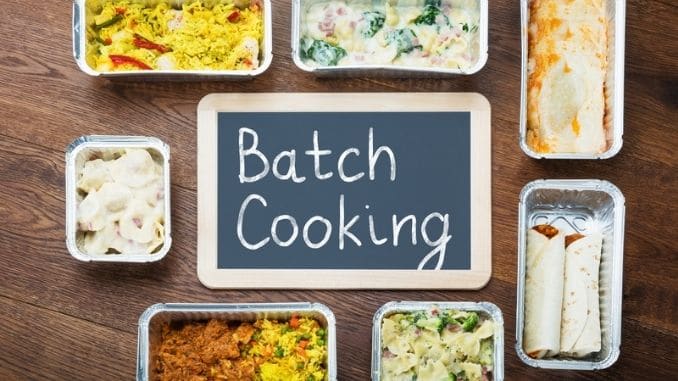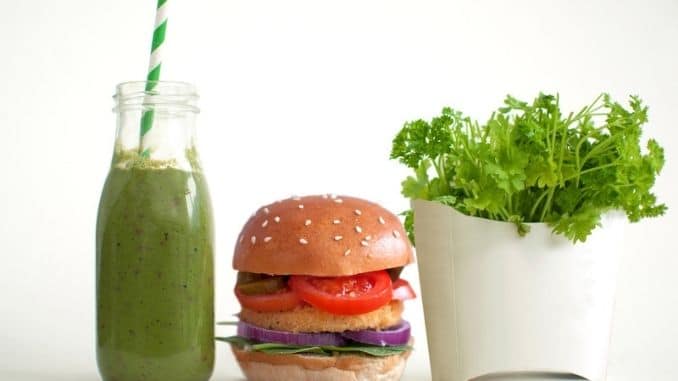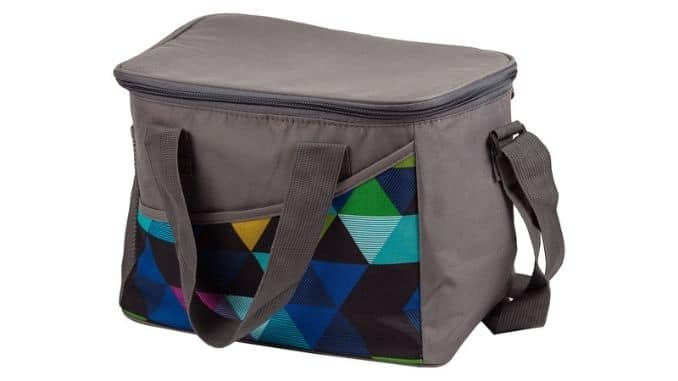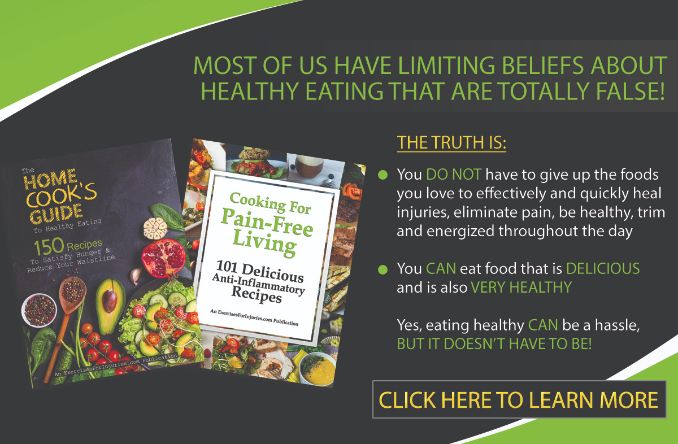
Most everyone is busy these days, and sometimes there are not enough hours in the day to cook nutritious, homemade meals.
Unfortunately, what often happens when you have to grab and go is that you reach for convenient, prepackaged foods that are laden with sugar, salt, and fat. It’s not going to hurt you to do this once in a while, but if you’re chronically eating in a hurry, you can quickly plunge yourself into a bad health situation.
A diet that’s high in saturated fat, sugar, and sodium, can lead to weight gain, elevated blood sugar levels, energy ups and downs, mood swings, and even high blood pressure in just a matter of a few weeks. And we all know that it’s much easier to gain weight than it is to lose it.
To avoid falling into an unhealthy on-the-go eating habit, try the following tips for healthier eating on the go. With a little planning and creativity, you can make your diet fit your lifestyle without having to sacrifice your health.
1. Pre-plan your snacks.
If you’re eating on the go pretty often, your snacks likely make up a good portion of your diet. You’re grabbing something when you feel hungry and may not always stop for a complete meal.
The more you can pre-plan these snacks, the healthier you’ll be able to eat. Try to find even an hour or so on the weekends to pre-cut a few vegetables and fruits and toss them into single-serve bags. You can do the same with nuts and dried fruits for a type of trail mix. Or make a list and head out to the grocery store to stock up on healthy, fast items like the following:
- Nuts
- Seeds
- Popcorn
- Yogurt
- Low-fat cheese
- Whole-grain crackers
- Dried fruits
- Eggs (for hard-boiled eggs)
- Peanut butter
- Celery and carrots
- Berries, grapes, apples, oranges
2. Batch cook.
The weekend may be the only time you have to prepare a meal or two. Take advantage of that one quiet hour when you can batch cook a big meal to enjoy later in the week. If you make more than you would for one typical meal, you can freeze the extra for when you need it.
Good options for this type of cooking include soups, stews, chili, casseroles, meatloaf, pasta (like lasagna), grilled or roasted chicken, and shepherd’s pie. Oatmeal is another food you can batch cook and then refrigerate to have throughout the week. Top it with some cut-up fruit and you have a super healthy breakfast. You can search for “batch recipes” online to find more fun ideas to try.
Another option is to prepare the components you’ll need for a meal so you can more quickly throw them together. You can cut up the vegetables, cook the potatoes and refrigerate them, pre-cook a batch of rice, roast the chicken, etc. so that on meal night all you have to do is pull everything out and warm it up.
(See our post, “15 Ways to Make Meal Planning Easy”)
3. Consider a meal subscription service.
If you have absolutely no time on the weekends to prepare meals, consider looking into one of the new meal subscription services that are available. Several of these around now will box up multiple meals’ worth of groceries and deliver them to your house each week.
When you receive the box, you simply put the premeasured ingredients together and follow the instructions to create a tasty meal in minutes. These services cost more than if you do the shopping yourself, but they may be helpful during a busy or stressful time. Many companies also allow you to choose from special diets, like gluten-free, low-carb, or vegetarian.
4. Get good at blending smoothies.
Smoothies make great on-the-go options for breakfast or lunch as long as they contain healthy ingredients. When you make them yourself, you can control what goes into them. If you’re afraid you won’t have time to put them together, put all the ingredients together in mason jars the weekend before. Then you can just dump the contents of the jar into the blender and press the button.
To make sure your smoothie is healthy, go light on the sugar and sweetened fruit juice. Choose water-rich fruits and vegetables, and use unsweetened almond milk instead of regular milk to bring down the calories. To make it creamy, add in some avocado, Greek yogurt, or frozen cauliflower.
5. Choose healthy options when eating out.
Eating out is usually not as good for you as eating at home. According to a recent study from Tufts University, at fast-food restaurants, 70 percent of the meals the participants consumed were of poor dietary quality. At full-service restaurants, about 50 percent were.
“Our findings show dining out is a recipe for unhealthy eating most of the time,” said Dariush Mozaffarian, senior author.
Another related study published in 2021 found that frequent consumption of restaurant-made meals was strongly linked to early death. Those who ate two restaurant meals (or more) every day were more likely to die of any cause by 49%. They also had a 65% greater chance of dying from cancer.
Eating out, then, can be a hazardous choice, particularly if you make it often. The problem is that so many of the meals offered are high in calories and packed with fat, sodium, and sugar. Even some of the meals you would think would be healthy are often not.
The SkinnyLicious Asian Chicken Salad” from The Cheesecake Factory, for example, contains about the same amount of calories as a Quarter Pounder Deluxe burger from McDonald’s, plus it delivers a whopping 2,700 milligrams of sodium—more than the American Heart Association recommends that you eat in an entire day.
https://www.dreamstime.com/banquet-restaurant-meals-reception-healthy-eating-variety-prepared-dinner-party-lifestyle-image106156900
Knowing this, you can be more prepared when eating out. Follow these recommendations:
- Check the restaurant’s menu online before you go so you can see what items may be healthier choices. Large chains are required to include calorie information with their online menus.
- After you’ve checked menus online, choose the restaurant that has the healthiest options if you can. Avoid those with a lot of fattening, fried foods. Look for those that offer healthy, fit, or low-cal options.
- Use apps like “My Fitness Pal’s restaurant logging” to help guide you in making healthier choices.
- Forego the creamy salad dressings and choose oils instead. Better yet, ask for simple oil and vinegar. And always ask for the dressing on the side so you can control how much you use.
- Skip the bread. You can easily add hundreds of calories to your meal by eating the bread slices before the meal arrives. If you’re super hungry and can’t wait, ask for a healthier appetizer like a side of fruit or some veggies and hummus.
- Select broth-based soups. As with the salad dressings, cream-based soups have more fat and calories.
- Ask for extra vegetables. Then ask that they not be cooked in grease or butter. Steamed is often a healthy option that restaurants can accommodate.
- Know your meats. Skinless chicken breast is better than fried thighs or legs. When choosing beef, look for top sirloin, tip side steak, and bottom round. Save the fattier options like prime rib for special occasions.
- Request all sauces and butter on the side.
- Avoid empty-calorie drinks. These include sodas and cocktails. Choose water, tea, and coffee instead.
- Ask for grilled, broiled, and baked. These are the healthiest preparation methods in most cases. Other healthy words to look for include roasted, braised, steamed, and seared.
- Avoid unhealthy words like dipped, pan-fried, crispy, scalloped, breaded, cream, and alfredo.
- Go for the fish. As long as it’s not drenched in sauces or butter, it’s often the healthiest choice.
- Get a side of fruit.
- Ask for a to-go box immediately. Most restaurant meals are too large for the average person to eat. The second you get your meal, portion off part of it in the to-go box so you aren’t tempted to eat too much.
- Split the meal. This is another good way to cut back on calories. Plus you’ll save money too.
- Be careful with dessert. Dessert can be one of the best reasons for eating out, but most can add 400 calories or more to your meal. You have some options. Order one dessert for the table and let everyone have a bite. Or ask for some fruit and cream or sherbet.
6. Be wise when eating at fast-food restaurants.
Fast food restaurants are even worse when it comes to serving unhealthy foods. If that’s all you have time for, consider these guidelines:
- Choose the oatmeal for breakfast.
- Look for grilled chicken nuggets—Chik-Fil-A has them.
- Choose the junior-sized burger and fill out your meal with a salad and cut-up apples if they have them.
- Go for the soup and sandwich option.
- Salads are usually good options as long as you are careful of the dressings. Go for the light options like the Italian or balsamic vinaigrette.
- Look for the pre-made protein boxes at places like Starbucks. They’re often filled with fruits and vegetables, lean proteins, and healthy fats.
- Go for regular or junior-sized lean meats, whole-grain bread, veggies, and mustard at sub shops. Avoid fatty meats, bacon, meatballs, cheese, and white bread.
- At Mexican restaurants, look for grilled meats, fish, shrimp, soft tacos, black beans, and veggie burritos. Skip the crispy shells and wraps, refried beans, sour cream, extra cheese, and chips.
- At burger chains, stick with single-patty hamburgers, grilled chicken, veggie burgers, and baked potatoes. Skip the special sauces, breaded or fried meat and fish, bacon, milkshakes, and chicken nuggets or tenders.
- At Chinese chains, stick with grilled, steamed, and stir-fried lean meats and veggies, salads, wonton soup, and low-sodium soy sauce. Avoid the fried or crispy options, tempura, peanut sauce, sweet and sour, and regular soy sauce.
- Go for roasted or grilled chicken or chicken sandwiches, salads, and baked potatoes at fried chicken chains. Avoid fried and extra-crispy options, popcorn chicken, Caesar salads, chicken and biscuit bowls, and extra gravies or sauces.
- Watch out for condiments. Avoid high-fat, creamy options like mayonnaise and fry sauces, and choose ketchup, mustard, marinara, and BBQ.
- Avoid fried sides (French fries, onion rings) and choose fruit and salads instead.
- Skip the soda and choose water, milk, or tea.
7. Keep a cooler in the car.
This one tip can save you on most days. Simply stock the cooler with healthy foods before you leave for the day, then use them as needed. You can store fruits and veggies, pre-frozen meals (from your batch cooking weekend), ingredients for sandwiches or wraps, yogurt, cheese, peanut butter, and more in your cooler.
It can be helpful to pre-plan what you’re going to take and put those items at the front of the refrigerator or freezer so you can grab them the next morning. Once you get into the habit of stocking your cooler, you may find it easier to take your meals with you than to eat at a fast-food restaurant. And of course, you’ll be much healthier.
Eating healthy on the go can definitely be a challenge, and there is no harm in occasionally succumbing to the temptations of convenience foods. Unfortunately, if you find yourself frequently eating away from home, you need to take active steps to ensure you are eating as healthy as possible, as often as possible. The key is to plan and do your best to limit impulsive eating decisions.
Discover the best anti-inflammatory recipes you can easily create at home. Click here for more information.


